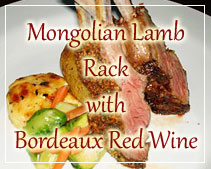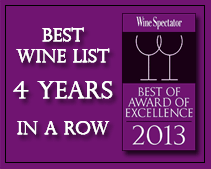The origins of modern day Porto Port Wine date back to 1820
December 29, 2010
Only after the British discovered Port Wine at the end of the 17th century, did the fame of its fine quality start spreading all over the world. In the middle 1750′s, the Portuguese authorities started controlling all the aspects of Port Wine production, including the demarcation of the boundaries of the Douro region.
This Douro valley region produces the grapes that give rise to the only authentic Porto. A large number of the wineries housed in lodges in Vila Nova de Gaia, where most of the Port Wines are blended and aged, have English names, attesting to the British origins of their founders. One of these founders, Joseph Forrester, obtained the title of baron in 1855 for his efforts at reforming the port trade. Croft was one of the first big shippers, followed by other English and Scottish firms, and much of the port trade is still in British control. The more well known names include Graham, Cockburn, Warre, Taylor, Krohn, Niepoort, Dow and Churchill. Some of the Portuguese traditional wine estates, called quintas, are Ferreira and Quinta do Infantado.
The origins of modern day Porto date back to 1820, when that particular harvest yielded a very sweet and rich wine. The reasons for its original sweetness lay in the exceptional ripeness of that vintage, which naturally allowed some of the grape sugars to stay. This rich and fortified Porto is now obtained by adding 20 % brandy (aguardente) to the liquid volume to arrest fermentation, and to maintain about 10% of the residual sugar. Fermentation of the grapes occurs now in large stainless steel tanks, and after it is stopped, the must is allowed to settle for a few months in large oak vats. The juice is then moved into 115-gallon oak casks (pipas) where it matures.
Presently, the Porto Wine Institute and the Casa do Douro oversee its production and guarantee quality control.
Types of Grapes
What gives Porto its unique quality, aroma, and flavor are the original combination of soil, climate, and grapes found in Portugal’s Upper Douro River Valley which stretches 62 miles to the Spanish border. There are five main grape varieties known for their superb quality. They are Touriga Nacional, Tinta Roriz, Tinta Barroca, Tinto Cao, and Touriga Francesa, and they grow in a predominantly schistous, rocky and acidic soil. The vine roots grow very deep down through the fissures in the schist to find water in natural reservoirs. These vines grow in terraces along the steep riverbanks, and their grapes are harvested between September 15 and October 15.
Most Popular Styles of Ports in the Market
All ports, apart from vintage, are matured in oak casks in the port lodges. Once bottled, they are ready for drinking and do not require decanting. The tawnies are lighter in taste and color than ruby, but they are all blended from several wines.
Tawny Porto – This wine is less sweet and lighter than ruby or vintage ports. It is blended from wines of different years, usually no more than three years old. The lighter tawnies have been blended with white port.
Tawny with Indication of Age – This famous Port pales to an amber color as it ages. Its aroma and flavor characteristics are the craft of a master blender, the person who creates the uniqueness of each of these wines. Aged Tawny may be labeled as 10, 20, or 30 years old, referring to the average age of its blend of old and young wines.
Vintage Porto – is characterized by its intense red color, full body, and complexity of flavor. In years of outstanding harvest quality, the producer must declare their best wine as “vintage”, and submit a sample bottle to be approved by the Porto Wine Institute after January of the second year from the harvest. The norm is to leave the wine in the cask for 2 to 3 years, and then age it in bottles for many years, where the best ones continue to improve indefinitely.
Late Bottled Vintage – is less rich and concentrated than Vintage Porto, and throws little sediment in the bottle. Its quality must also be approved by the institute. Then it is left in the cask for four to six years, filtered, and bottled as a ready to drink wine.
How to Store and Serve Vintage Porto
The bottles should be stored on their side and in the same position to prevent the cork from drying out. They should be kept under fairly constant temperature -between 55 and 60 degrees Fahrenheit, and humidity not dropping below 50%.
Vintage Porto must always be decanted before drinking, due to its large amount of sediment. Decanting is done by simply leaving the bottle upright for a full day, and then pouring the contents slowly into a glass decanter, being careful not to dislodge the sediment at the bottom. When sediment begins to show on the bottleneck, stop and discard the rest.
Porto tongs may be necessary to use to remove the cork of bottles more than 30 years old. The metal portion is heated up until it becomes red hot, and then immediately placed around the neck of the bottle for a few seconds. After pouring cold water over the neck, the cork can be removed with one pull.
The Art of Drinking Port Wine
The rich, full-bodied types of Porto are usually drunk after a meal, but the lighter Tawny and White varieties are highly appreciated as an apéritif before a meal. Nuts and cheeses, or pies and cakes are a good choice to accompany Porto, or even melon, depending on the mood of the party. To best bring its aroma out, pour it into a 5-6 ounce stemmed glass with sides that slope inward, filling it half to 2/3rds way.
Source: http://www.portugal.com/information/portwine
Are these articles useful for enhancing your wine and dine experience in the Philippines. Do they also help you with travel, leisure, vacation, dining out, nightlife and other leisure activities plans in Manila and other major cities of Philippines? Yats Restaurant hopes to provide you with ample information so you can plan your trips to Pampanga Angeles City Clark Freeport Zone whether you are travelling from Manila or other Asian countries such as Hong Kong, Shanghai, Singapore, Malaysia or Korea.
Restaurant reservations in Manila Philippines, planning of menu, selection of wine for dinner and booking a private function and event in Angeles City Clark Freeport Zone can all be handled. Yats Restaurant and Wine Bar has been regarded by many to be the premier restaurant north of Manila Philippines. Its 3000-line award-winning restaurant wine list has kept many wine lovers happy dining in this restaurant in Angeles City Clark Philippines for over a decade.
Yats Restaurant and Wine Bar was built by Hong Kong-based Yats International in 2000 to provide a world-class cozy fine dining restaurant, business meeting facilities and venues for private dinners and functions in Pampanga Angeles City Clark Freeport Zone. Pampanga Angeles City Clark Philippines was selected for this restaurant because of safety, clean air, absence of traffic and proximity to Manila and Subic.
For comments, inquiries and reservations, email Restaurant@Yats-International.com or call these numbers:
(045) 599-5600 0922-870-5178 0917-520-4401
Http://www.YatsRestaurant.com
Getting to this fine dining restaurant of Angeles City Clark Freeport Zone Pampanga Philippines
How to get to this fine-dining restaurant in Clark Philippines? Once you get to Clark Freeport, go straight until you hit Mimosa. After you enter Mimosa, stay on the left on Mimosa Drive, go past the Holiday Inn and Yats Restaurant (green top, independent 1-storey structure) is on your left. Just past the Yats Restaurant is the London Pub.
Pampanga is fast gaining the respect of food and wine lovers from Manila and tourists from all over Asia as a holiday destination that has good restaurants. Manila residents spending holidays in Clark often wine and dine at some of the best restaurants in Pampanga. Within Angeles City, there is one restaurant in Clark that is lauded by food and wine lovers as one of the best restaurants outside Manila to enjoy good wine and good food. This is also one of the good restaurants in Pampanga that is very child friendly also. Visitors to Clark Philippines rarely pass up in the opportunity to dine at one of the best restaurants in Pampanga.









